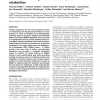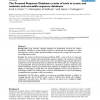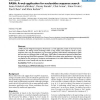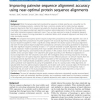301 search results - page 11 / 61 » Similarity Searching for Multi-Attribute Sequences |
NAR
2008
13 years 7 months ago
2008
Protein sequences are the most important source of evolutionary and functional information for new proteins. In order to facilitate the computationally intensive tasks of sequence...
GCB
1997
Springer
13 years 11 months ago
1997
Springer
Motivation: Database search programs such as FASTA, BLAST or a rigorous Smith–Waterman algorithm produce lists of database entries, which are assumed to be related to the query....
BMCBI
2007
13 years 7 months ago
2007
Background: Large molecular sequence databases are fundamental resources for modern bioscientists. Whether for project-specific purposes or sharing data with colleagues, it is oft...
SCFBM
2008
13 years 7 months ago
2008
: FASH (Fourier Alignment Sequence Heuristics) is a web application, based on the Fast Fourier Transform, for finding remote homologs within a long nucleic acid sequence. Given a ...
BMCBI
2010
13 years 7 months ago
2010
Background: While the pairwise alignments produced by sequence similarity searches are a powerful tool for identifying homologous proteins - proteins that share a common ancestor ...




